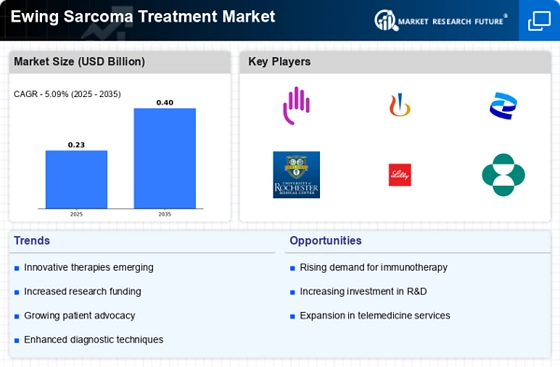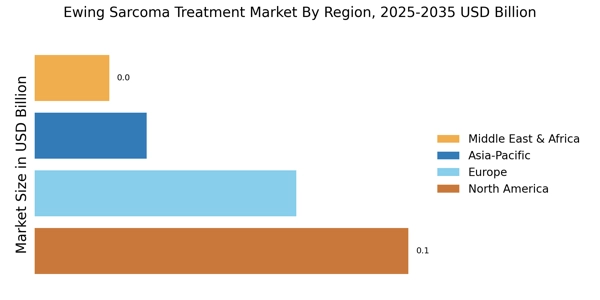Growing Awareness and Advocacy
The growing awareness and advocacy surrounding Ewing Sarcoma are pivotal in shaping the Ewing Sarcoma Treatment Market. Increased efforts by patient advocacy groups and healthcare organizations to educate the public about this rare cancer are leading to earlier diagnosis and treatment. Campaigns aimed at raising awareness are crucial in mobilizing resources and support for affected individuals and their families. As more people become informed about Ewing Sarcoma, the demand for specialized treatment options is likely to rise. This heightened awareness not only encourages patients to seek timely medical intervention but also drives healthcare providers to enhance their treatment offerings. Consequently, the Ewing Sarcoma Treatment Market is poised for growth as advocacy efforts continue to expand, fostering a more informed patient population.
Rising Incidence of Ewing Sarcoma
The increasing incidence of Ewing Sarcoma is a notable driver for the Ewing Sarcoma Treatment Market. Recent statistics indicate that Ewing Sarcoma accounts for approximately 1-2% of all childhood cancers, with a higher prevalence in adolescents and young adults. This rise in cases necessitates the development and availability of effective treatment options, thereby propelling market growth. As awareness of this rare cancer expands, more patients are likely to seek treatment, further stimulating demand within the Ewing Sarcoma Treatment Market. Additionally, the need for specialized care and innovative therapies is becoming increasingly apparent, as traditional treatment methods may not suffice for all patients. This trend suggests a potential for increased investment in research and development, ultimately enhancing treatment outcomes.
Advancements in Treatment Modalities
Innovations in treatment modalities are significantly influencing the Ewing Sarcoma Treatment Market. The introduction of novel therapies, including targeted therapies and immunotherapies, has transformed the landscape of Ewing Sarcoma treatment. For instance, the use of monoclonal antibodies and small molecule inhibitors has shown promise in improving patient outcomes. Furthermore, the market is witnessing a shift towards personalized medicine, where treatments are tailored to the genetic profile of the tumor. This evolution in treatment strategies is likely to enhance efficacy and reduce side effects, thereby attracting more patients to seek advanced care. As a result, the Ewing Sarcoma Treatment Market is expected to expand, driven by the demand for innovative and effective treatment options that address the unique challenges posed by this rare cancer.
Increased Funding for Cancer Research
The surge in funding for cancer research is a critical driver for the Ewing Sarcoma Treatment Market. Governments and private organizations are increasingly allocating resources to understand and combat rare cancers, including Ewing Sarcoma. This financial support facilitates clinical trials and research initiatives aimed at discovering new treatment options and improving existing therapies. For example, the National Cancer Institute has prioritized research on rare tumors, which may lead to breakthroughs in Ewing Sarcoma treatment. The influx of funding not only accelerates the pace of research but also fosters collaboration among academic institutions, pharmaceutical companies, and healthcare providers. Consequently, this collaborative environment is likely to yield innovative solutions, thereby enhancing the Ewing Sarcoma Treatment Market and improving patient outcomes.
Regulatory Support for Innovative Therapies
Regulatory support for innovative therapies is emerging as a significant driver for the Ewing Sarcoma Treatment Market. Regulatory agencies are increasingly recognizing the need for expedited approval processes for treatments targeting rare cancers. Initiatives such as orphan drug designations and fast-track approvals are designed to encourage the development of therapies for conditions like Ewing Sarcoma. This supportive regulatory environment not only incentivizes pharmaceutical companies to invest in research and development but also facilitates quicker access to potentially life-saving treatments for patients. As a result, the Ewing Sarcoma Treatment Market is likely to benefit from a growing pipeline of innovative therapies, ultimately improving treatment options and outcomes for patients diagnosed with this challenging disease.


















Leave a Comment